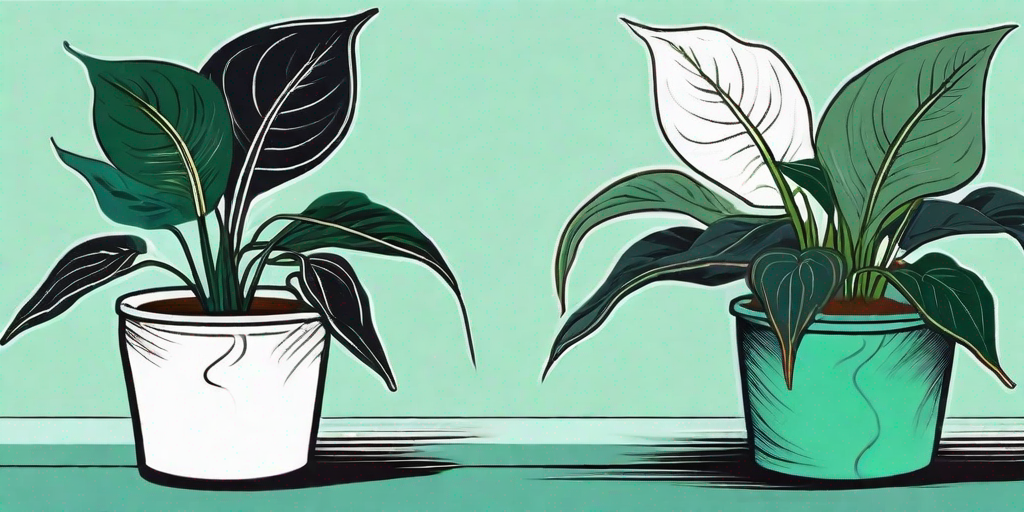
The Peace Lily, or Spathiphyllum, is a beloved houseplant known for its lush, green foliage and elegant, white flowers. It's a symbol of tranquility and serenity, hence the name. But, like all living things, it occasionally needs a change of scenery. And by scenery, we mean pot. But how do you know when it's time to move your Peace Lily to a new home? Let's delve into the world of potting peace.
Understanding Your Peace Lily
A Peace Lily isn't just a pretty face. It's a resilient, adaptable plant that can survive in various conditions. However, it does have its preferences and needs, just like a pet or a particularly demanding roommate. Understanding these needs is the first step to knowing when it's time to repot your Peace Lily.
Peace Lilies prefer a snug pot. They like to feel secure, with their roots tightly packed. But, like a teenager outgrowing their childhood bed, there comes a time when they need more space. This is where the repotting comes in.
Signs Your Peace Lily Needs a New Home
So, how do you know when your Peace Lily is ready for a bigger pot? Well, it won't exactly send you a text message or leave a note on the fridge. But it will give you signs. You just need to know what to look for.
Signs that your Peace Lily needs repotting include yellow leaves, wilting, slow growth, and roots growing out of the drainage hole. If your Peace Lily is displaying one or more of these symptoms, it's probably time to consider repotting.
How to Repot Your Peace Lily
Now that you know when to repot your Peace Lily, let's talk about how to do it. Don't worry, it's not as daunting as it sounds. In fact, it's quite a peaceful process. Pun intended.
First, you'll need a new pot. It should be about 2 inches larger in diameter than the current pot. This gives your Peace Lily room to grow without overwhelming it with too much space. Remember, it likes to feel snug.
Next, you'll need fresh potting soil. Peace Lilies prefer a well-draining soil mix, so look for one that contains perlite or vermiculite. You can also make your own mix by combining equal parts peat moss, perlite, and garden soil.
Once you have your new pot and soil, it's time to repot. Gently remove your Peace Lily from its current pot, taking care not to damage the roots. Place it in the new pot and fill in with soil, making sure the plant is at the same depth as it was in the old pot. Water thoroughly, and voila! Your Peace Lily has a new home.
Aftercare for Your Repotted Peace Lily
Repotting can be a bit of a shock for a plant, even a resilient one like the Peace Lily. It's important to provide some extra care in the weeks following the move to help your plant adjust.
Keep your Peace Lily in a warm, well-lit spot, but out of direct sunlight. Water regularly, but don't overdo it. The soil should be kept moist, but not soggy. If the leaves start to yellow, you're overwatering.
It's also a good idea to hold off on fertilizing for a few weeks. Your Peace Lily will be busy adjusting to its new home and won't be able to take full advantage of the nutrients. Once it's settled in, you can resume your regular fertilizing schedule.
Frequently Asked Questions
How often should I repot my Peace Lily?
On average, a Peace Lily should be repotted every 1-2 years. However, this can vary depending on the size of the plant and the conditions in which it's growing. Always look for the signs that your Peace Lily needs repotting, rather than sticking to a strict schedule.
Can I split my Peace Lily when I repot it?
Absolutely! In fact, repotting is the perfect time to divide your Peace Lily. Just be sure to do it gently to avoid damaging the roots.
What should I do if my repotted Peace Lily isn't thriving?
If your Peace Lily isn't doing well after repotting, it could be due to a number of factors. It could be getting too much or too little water, too much or too little light, or it could be in a pot that's too big or too small. Try adjusting these factors one at a time to see if your Peace Lily improves.
Conclusion
Repotting your Peace Lily is a simple process that can greatly benefit your plant. By understanding your Peace Lily's needs and knowing the signs that it's time to repot, you can ensure your plant continues to thrive and bring peace and tranquility to your home.
So, don't fear the repot. Embrace it. Your Peace Lily will thank you.















